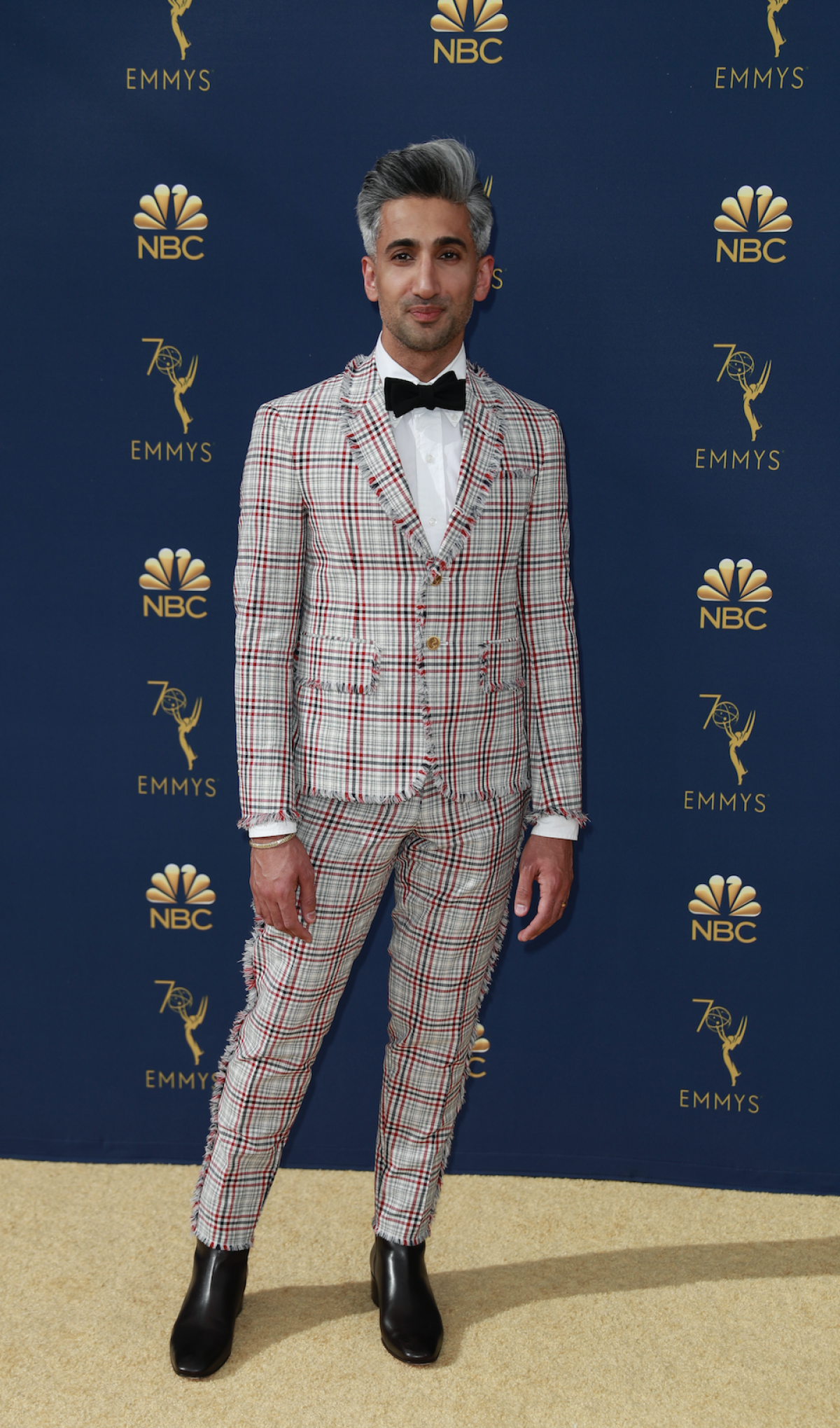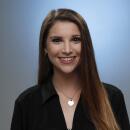‘Queer Eye’s’ Tan France faced racism as a kid. Then he brushed off bullies and discovered self-love

- Share via
You might know him from the French tuck or his distinctive hair.
But “Queer Eye’s” fashion guru Tan France wants fans to get to know him beyond the surface. His new book, “Naturally Tan,” provides a deeper look at the English designer’s life, ahead of the hit Netflix show’s fourth season premiere Friday.
“I wanted the opportunity to really say it as it is,” he told The Times over the phone, “and to be able to speak on things that I don’t think I’d be able to speak on, on the show.”
“It’s the most real version you’ll come across of me for sure,” France says.

As the title suggests, France speaks openly in the book about his skin color and how it’s affected him from childhood to adulthood.
At age 5, he remembers thinking, “God, I’d give anything to be white. I fantasized all the time about what it would feel like to be a white person — nobody would ever comment about your race,” he writes in the book.
Today, he embraces his skin color, calling it “the most beautiful thing about my appearance.”
But he writes of others who are still less accepting. In a chapter titled “911,” France describes being stopped at least 24 times for questioning in airport screening rooms. At the time, he was used to being called racial slurs like “Paki,” but after 9/11, he was called a “terrorist” and “raghead.”
“On the anniversary of 9/11 … I see the words Never Forget,” reads an excerpt from the chapter. “I understand that sentiment. I completely agree with honoring those who lost their lives … But there is another side to this, too. It means we never forget to see my people as a potential threat.”
France almost did not include the chapter in his book, as he worried how the American public and press would respond. But a couple weeks after the book’s editing process finished, he called his editors and asserted it needed to be included.
“It is the chapter that is the most controversial, because my perspective is not often listened to, or heard or welcomed,” he told The Times. “But I’m glad I included it. People can disagree all they want, but that’s how I feel, and I know that’s how many of my people feel.”
The “Queer Eye” star spoke with The Times about racism he’s faced, his coming-out story and his advice for LGBTQ youth. The following interview has been edited for length and clarity.
RELATED: Bobby Berk of ‘Queer Eye’ on how the show pays it forward for LGBTQ youth
The topic that anchors the book is your journey to love your skin color. The book title and one of your chapters is “Naturally Tan.” How did you land on that phrase?
First of all, “Naturally Tan” made me giggle, and it’s very light-hearted. But skin color, when I was writing the book, it just kept coming to mind. It kept bothering me: the notion of skin color and whether it’s beautiful or desirable. And it’s always pale. “White is right.” So, that is why I wanted to talk about this.
It’s my natural skin color. I can do nothing about it. And now it’s given me so much confidence, where at one time of my life, when I was younger, it brought me so much distress and unhappiness. I thought that I would always be seen as less than. Now, the reason I was so happy to call it “Naturally Tan” is because I embrace my skin color so much. I think it’s the most beautiful thing about my appearance. I love my brown skin very, very much.
What did you learn about yourself in the process of writing the book?
I had a way to sneak things under the rug, and only now am I processing all of those feelings. The color issue of the skin tone was a big one for me. Racism was something that I mostly had forgotten about. When people ask me what life was like as a kid, I always say, “Oh, lovely. I always had the jolliest home life.” Until I wrote the book, I was like,”No, actually. It was very difficult.”
You describe a time when you were 11 and your 13-year-old brother was severely beaten by racist bullies.
That’s just one of the stories. That was a really regular occurrence — the crap that we went through. I wanted to share one story so people can understand the gravity of the situation.
When writing about your childhood in northern England, you describe a community that did not accept queer people nor families of Pakistani descent. What advice do you have for kids raised in environments in which they are also made to feel like “the other”?
The people who are raised in families like mine, I would say that we have to accept the fact that there hasn’t been representation for our community the way there has for Caucasian communities. Therefore, we have to accept the fact that our families don’t understand our lives as well.
Maybe be more open to the questions you might get, because people aren’t as informed. And find people that you can connect with. We have the luxury of social media these days. I would suggest reaching out to people by finding them through hashtags or local Instagram handles.
Another challenging topic you delve into is your past experience suffering from depression and suicidal thoughts, not long before you landed “Queer Eye.” Why was that important to include?
It was hard, but it felt important, because if I was going to write a book about my life, it should be a real book about my life and not just the rosy parts.
However, I made a point of making it a paragraph, I didn’t belabor the point, because I didn’t want it to be a situation where lesser publications use it as click bait like, “Oh, Tan France was suicidal.” Well, yes, any of us go through a point where we are at our very lowest and we do things that are unwise. Thankfully, many of us find a way out of it with great support.
I never have professed to be somebody who suffers from depression. That is something that many people I know suffer from and it’s a real issue, a real concern that you can’t just brush off the way I was able to move on from my situation.
You said you used bleaching cream at one point as a kid. How has your family reacted to hearing that?
We never talked about skin bleaching ever as kids, but apparently every one of us wanted to try it at some point. My siblings were like, “Yeah, of course we wanted to give it a go.” And some of them did, because they thought that that was the only way that people were going to see them as equal. I think every one of us in my family felt the pressure to be as pale as physically possible.
It’s a horrible situation in many communities of color where people feel if you’re not pale enough, you’re not going to be successful. So, thankfully, my family is in a position where we can talk about it lightheartedly, because we’ve moved past that point. But it is still a sorry state of affairs that this continues on, and there are those kind of products that are sold across the world.
You tell the story of when you first came out to a friend. But I noticed you never mention your coming-out story to your family, who had been less accepting of queer people. Was omitting that intentional?
I didn’t talk about it because there are certain things that are very private to me, and family is one of them. Because I chose to do this job. I chose to allow fame into my life, and I don’t want to take that choice away from my family. I never mentioned their names, because they didn’t sign up for this. That was my choice.
One chapter is titled, “911” in which you share your perspective of that historic event and how the aftermath has affected you. Why was that important for you to include?
It was the hardest chapter to include. It was a chapter that I decided I wanted to include when I decided to write this book. I didn’t think I had a book in me at all, and then I said, “If I do this, I have one particular thing I want to talk about.”
However, when it came to including it in the book, I was too scared because I was worried how the American public would respond and the American press might drag me for it. But after the book closed, a couple weeks later, I called my editors and said, “I have to include it.”
Thankfully, they allowed me to. It is the chapter that is the most controversial, because my perspective is not often listened to, or heard or welcomed. But I’m glad I included it. People can disagree all they want, but that’s how I feel, and I know that’s how many of my people feel. It’s the chapter that I’m very happy about in the book.
You said you couldn’t imagine a show where someone who is South Asian could replace the original “Queer Eye’s” Carson Kressley and have that still be something people would watch. Now, people like Jon Bon Jovi and the “Broad City” ladies are superfans. What do you hope people take away from the show and your book?
I hope that people take away something really positive. I hope that they feel good about themselves and what life could be after watching “Queer Eye.” I think that we see so much hate and anger on TV these days. I think that it’s a lovely escape from all of that.
With my book, I hope that they see a perspective that they’ve never seen before. If they are a part of the many communities that I am a part of, I hope they feel seen and understood and less alone than how I felt when I was a kid.
To now be in a position where I’ve taken on the job that Carson had and to have been so well received, I couldn’t be happier with the outcome. It gives me real hope for the other people of my culture, my community or my ethnic background in show business that they may receive the same positive attention that I did.
Season 4 of “Queer Eye” begins streaming Friday. But you didn’t connect right away with all your costars. What did they think when you described some of your first impressions negatively?
They find it hilarious. Jonathan completely disagrees. He thinks he was completely wonderful from moment one and that I was being so stiff. They find it really funny. They know my opinions of all of them. There are no secrets in the Fab 5.
More to Read
Sign up for our Book Club newsletter
Get the latest news, events and more from the Los Angeles Times Book Club, and help us get L.A. reading and talking.
You may occasionally receive promotional content from the Los Angeles Times.








